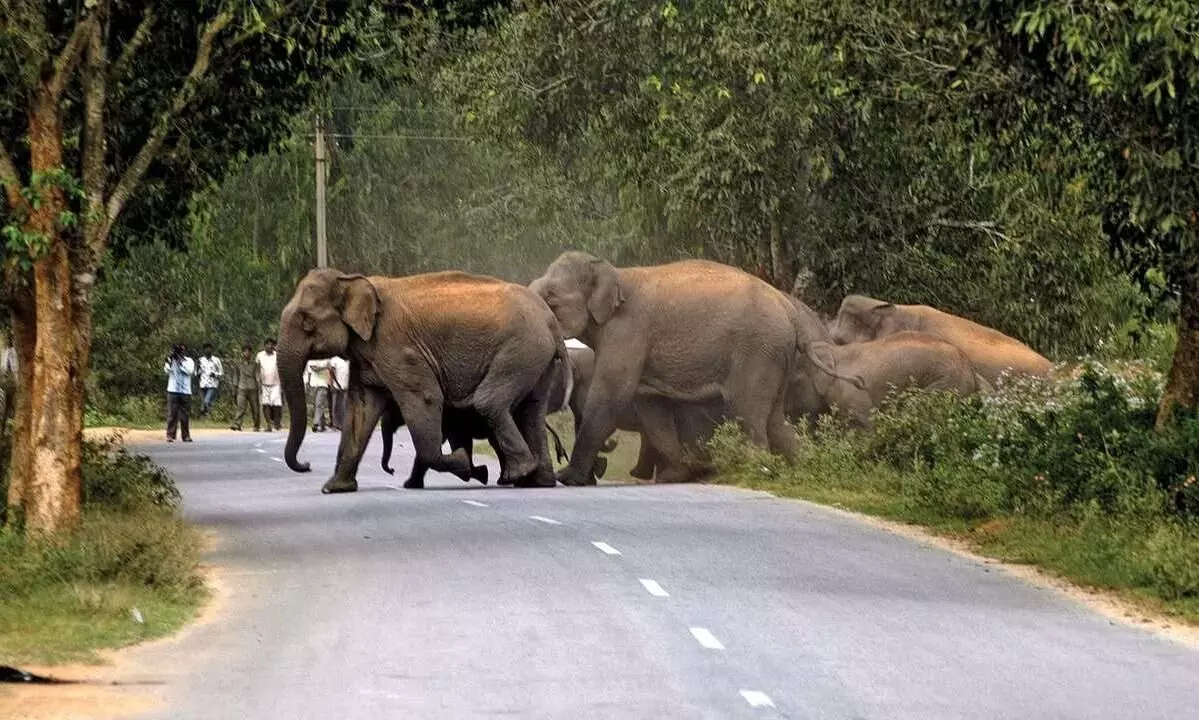
A file photo of an elephant herd crossing a road somewhere in Assam. (AT Photo)
New Delhi, Sep 13: India has at least 150 elephant corridors spanning 15 range-states across four elephant-bearing regions, with West Bengal topping the list with 26 such land strips, according to a new Union Environment Ministry report.
The central government's 2010 Elephant Task Force report (Gajah report) listed 88 corridors in the country.
The latest report, titled "Elephant Corridors of India", also highlights that the intensity of elephant use has increased in 59 of these corridors, remained stable in 29 and decreased in 29 others. Of the total corridors, 15 have been impaired and require restoration efforts to restore functionality. Information regarding the current use of 18 corridors by elephants was unavailable.
An elephant corridor is a land strip facilitating the movement of elephants between two or more viable habitat patches. Corridors leading the animals away from forest habitats into human domain without connecting to viable habitat patches are not considered true elephant corridors.
Demographic isolation and genetic viability concerns pose an extinction risk to elephant populations. Therefore, safeguarding elephant corridors is a key conservation strategy, the report states.
According to the last estimation conducted in 2017, there are around 30,000 elephants in India, which accounts for 60 per cent of the animal's global population.
The latest report is an outcome of a collaborative effort between the Union Environment Ministry's Project Elephant and state forest departments, with technical support from the Wildlife Institute of India. Ground validation of the 150 elephant corridors across 15 states took nearly two years to complete.
West Bengal leads with the highest number of elephant corridors in India, accounting for over 17 per cent of the total such land patches in the country, the report states.
Among the four elephant-bearing regions in India, the east-central region reported the highest number of elephant corridors at 52, followed by the northeast region with 48 and the southern region with 32. The northern region has the lowest number of elephant corridors at 18.
Of the 150 reported elephant corridors, 126 are within the political boundaries of states while 19 are located across two states. There are also six transnational corridors between India and Nepal, primarily in Uttar Pradesh.
The report says that there are states where elephants have recently expanded their ranges. These include the Vidarbha region in Maharashtra adjoining Chhattisgarh, southern Maharashtra adjoining Karnataka, Madhya Pradesh -- where elephants presently occur in Bandhavgarh and Sanjay tiger reserves -- and northern Andhra Pradesh, where elephants move in from Odisha.
In these states, assessing the long-term viability of habitats to support elephant populations and adopting a data-driven approach to identify corridors is crucial.
The report states data on elephant movement remains limited in many northeastern states that host relatively small elephant populations. Collaborative efforts between state forest departments and Project Elephant could clarify the corridor status in these areas in the coming years.
